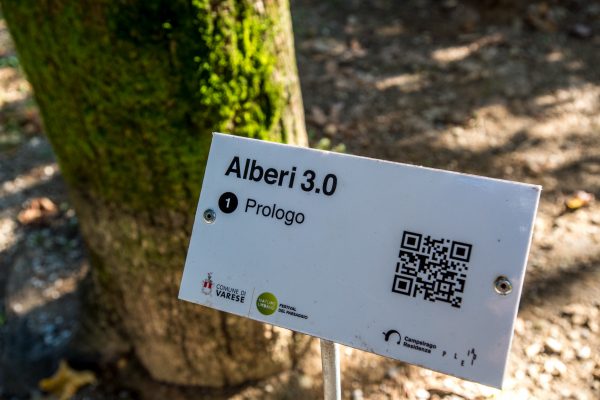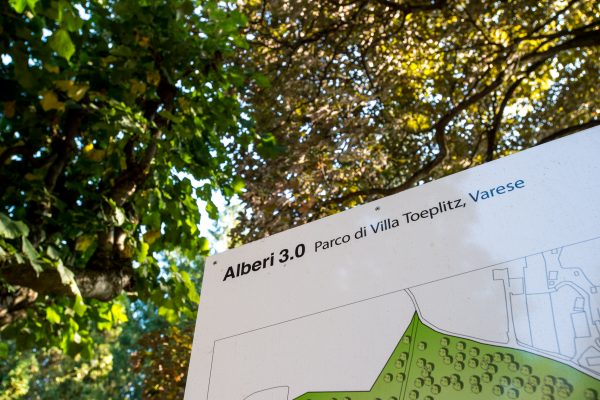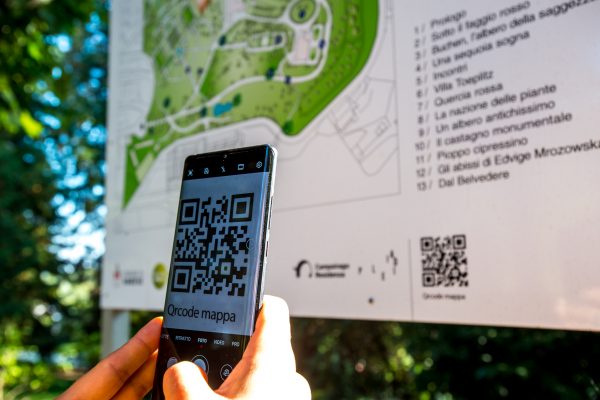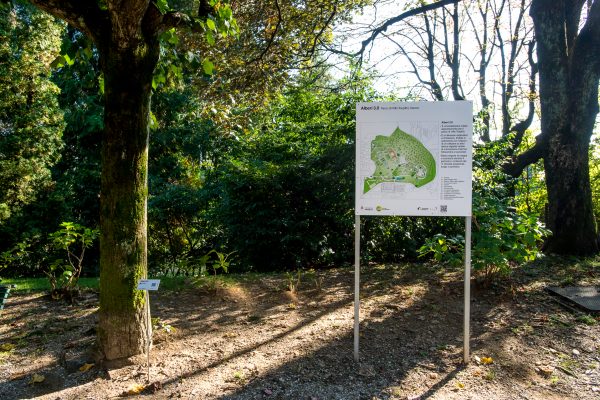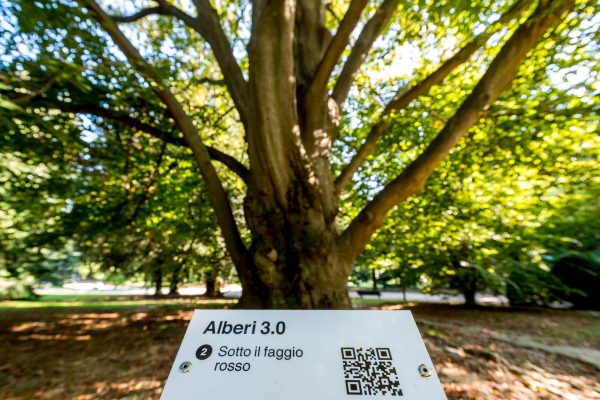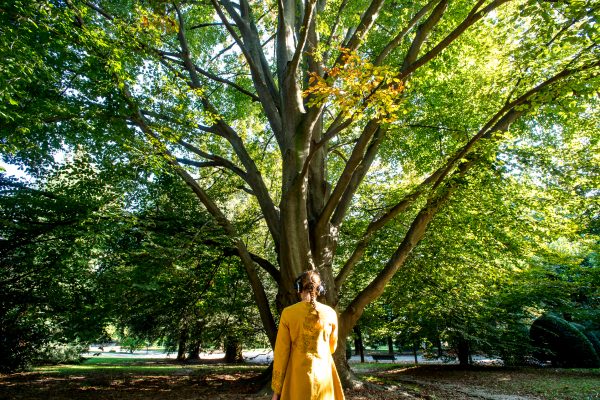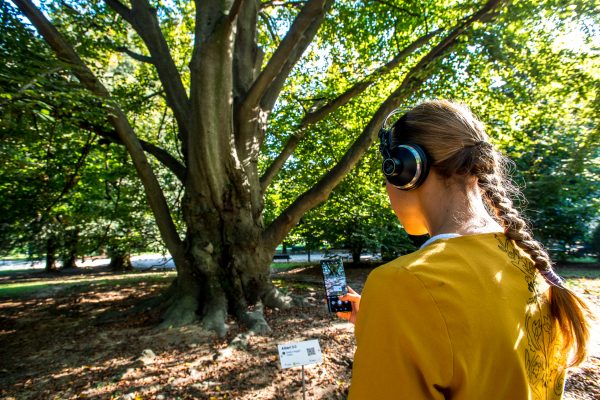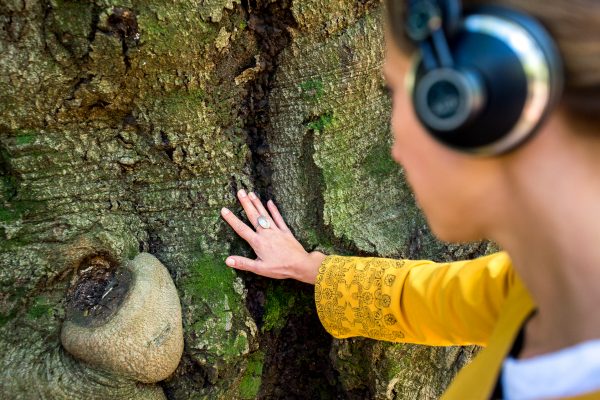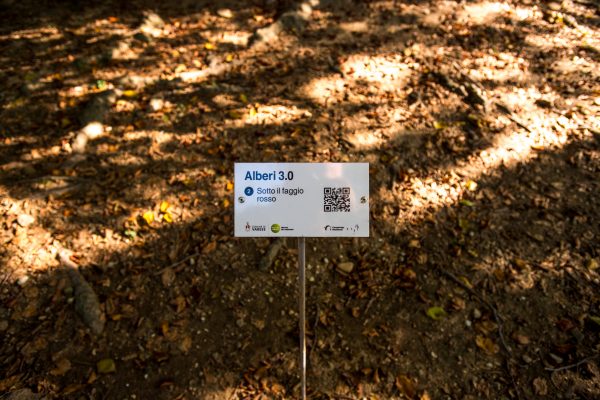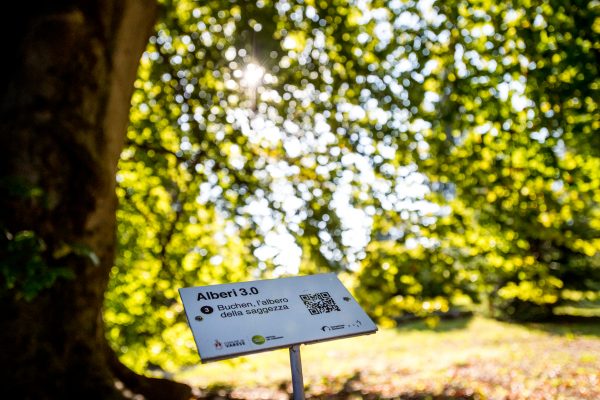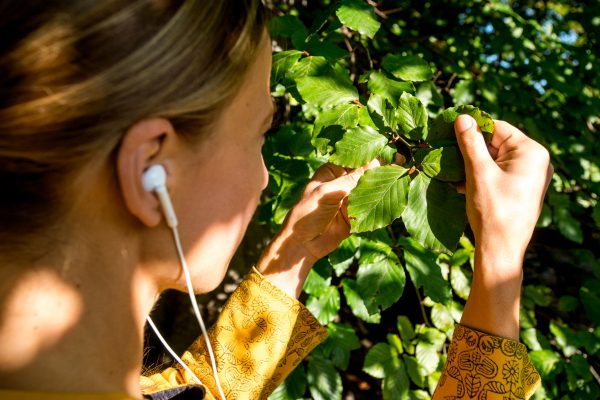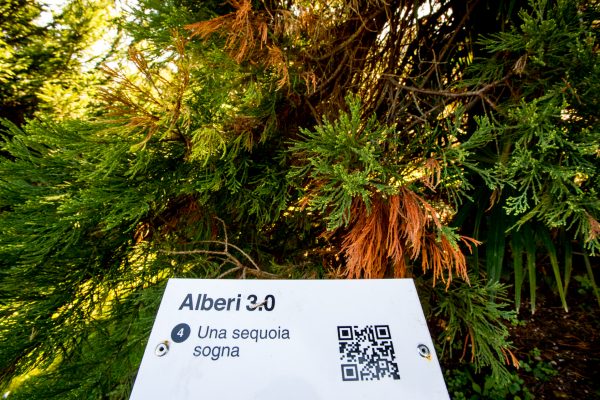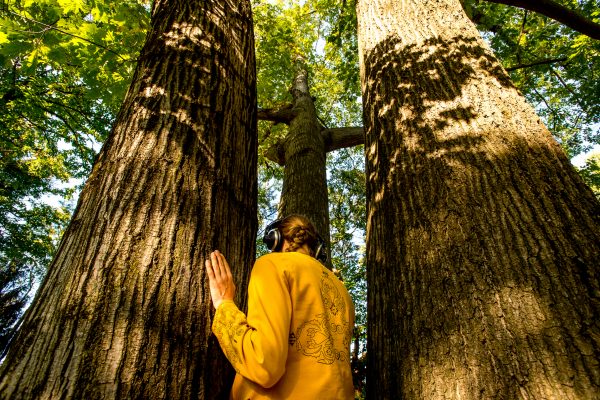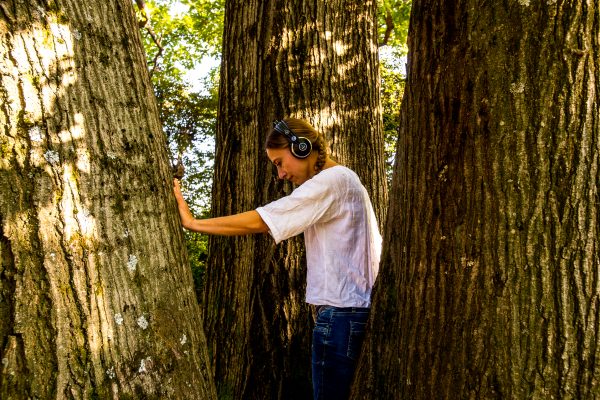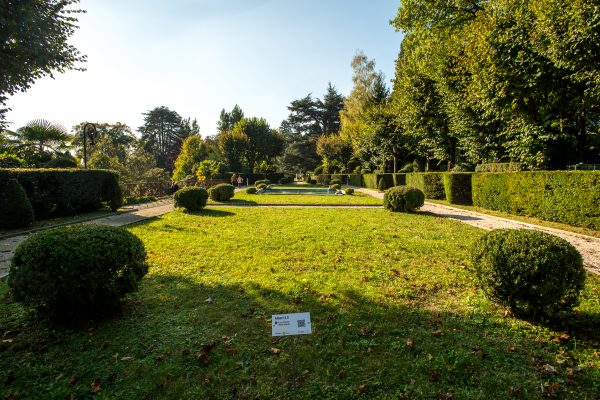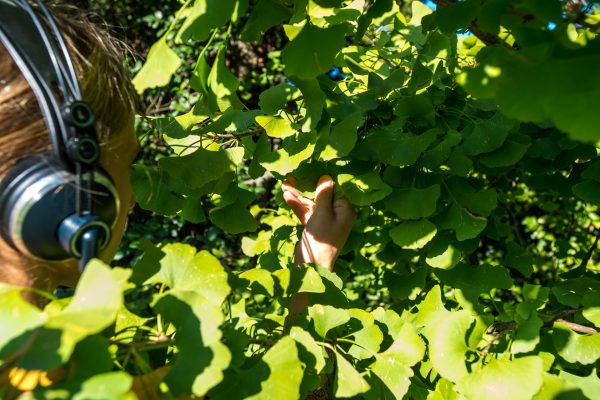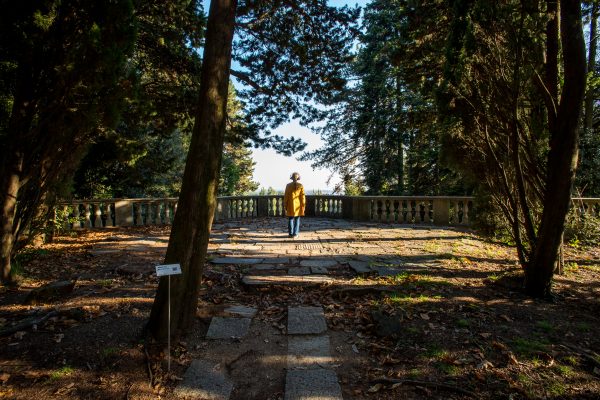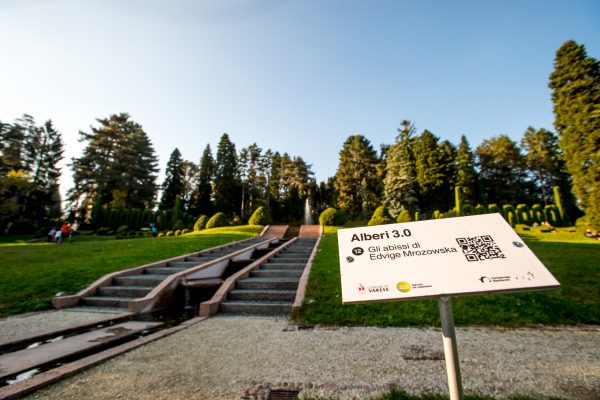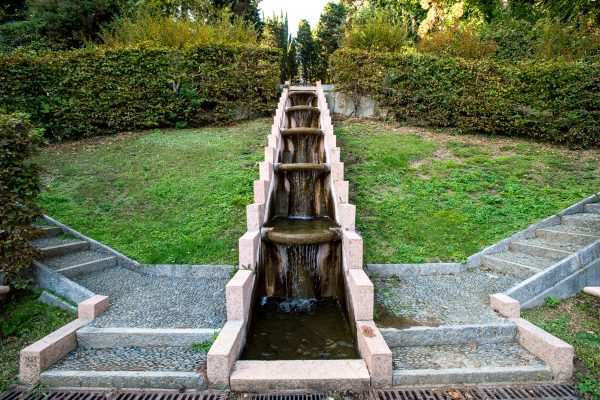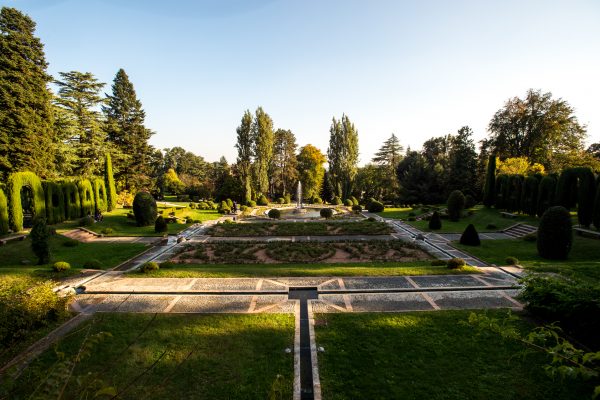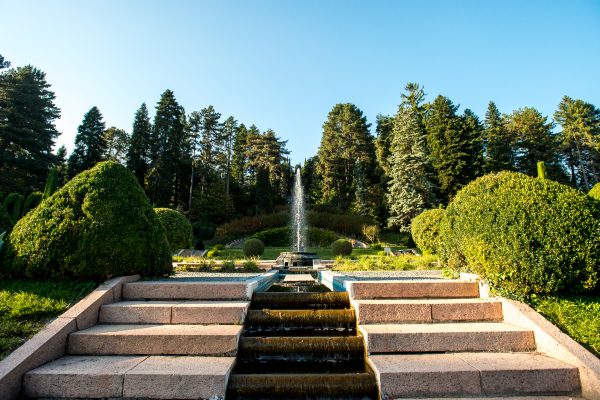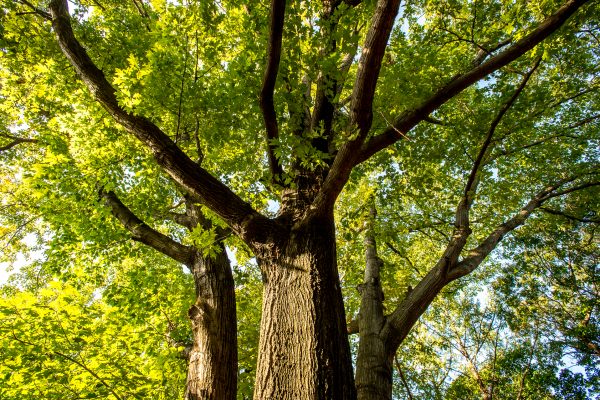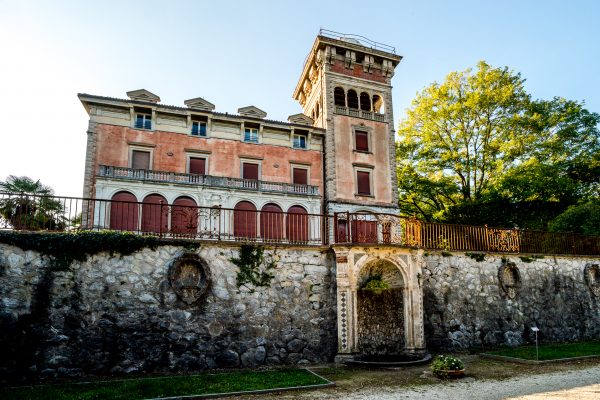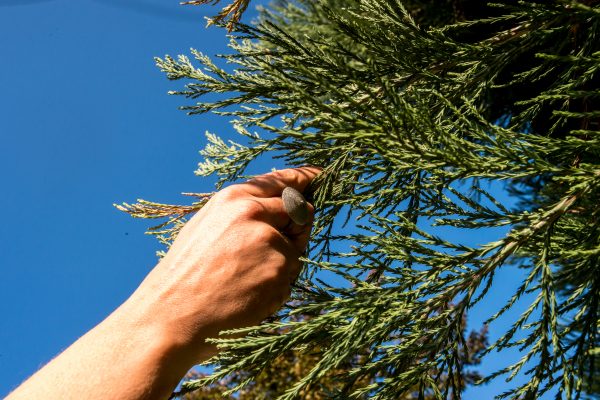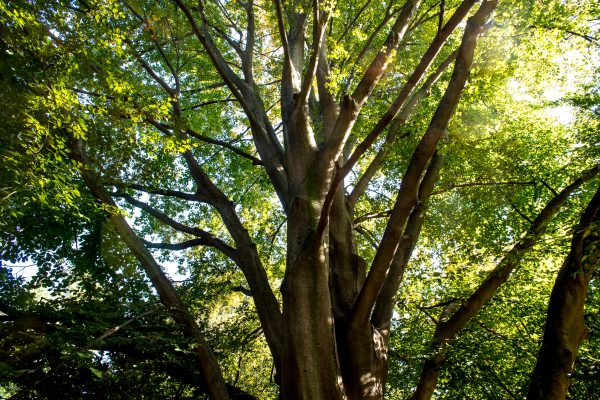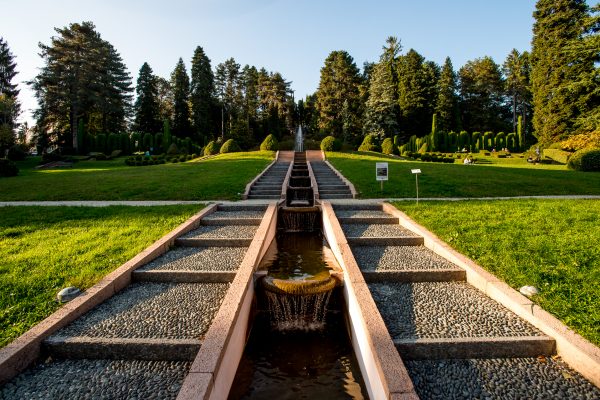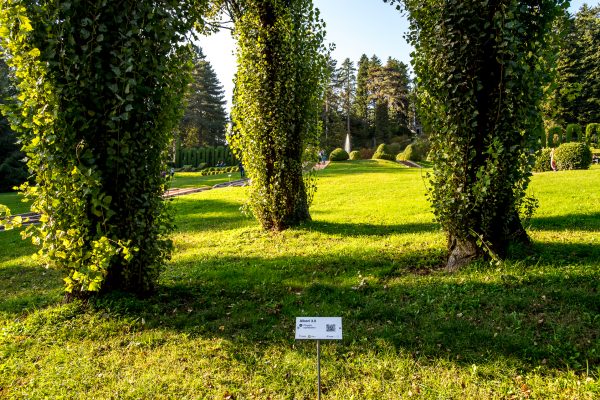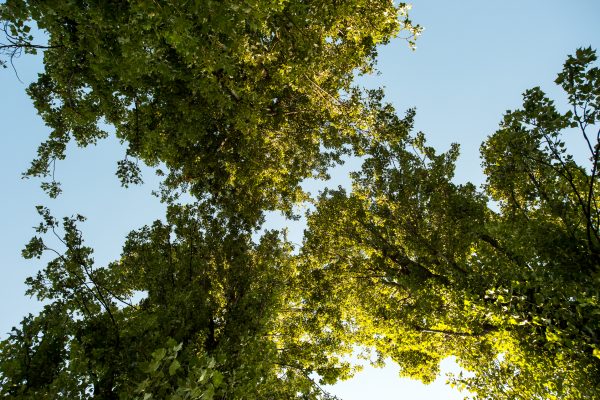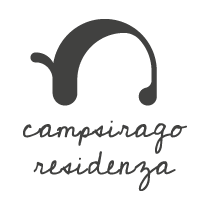It can be used independently inside the park with the use of a cell phone.
All you have to do is follow the map and download the contents of the 13 QR codes placed along the way.
Alberi 3.0 (Trees 3.0) is a permanent digital installation in the park of Villa Toeplitz in Varese, available to everyone through their smartphones. Trees 3.0 accompanies visitors to the park in a sound, poetic and dramaturgical itinerary, an immersive journey into the landscape to discover, and rediscover, the hidden beauty of what surrounds us and that, together with us, listens and breathes.
Trees 3.0 is a sound itinerary to discover the trees and the history of the park; a poetic experience that accompanies the journey, the look and the perception of nature and architecture of the park.
Poetic cues, narrations, sounds and music invite the public to experience a sensitive crossing of the park, offering suggestive moments of strong intimacy between the visitor and the natural and anthropic elements that surround him.
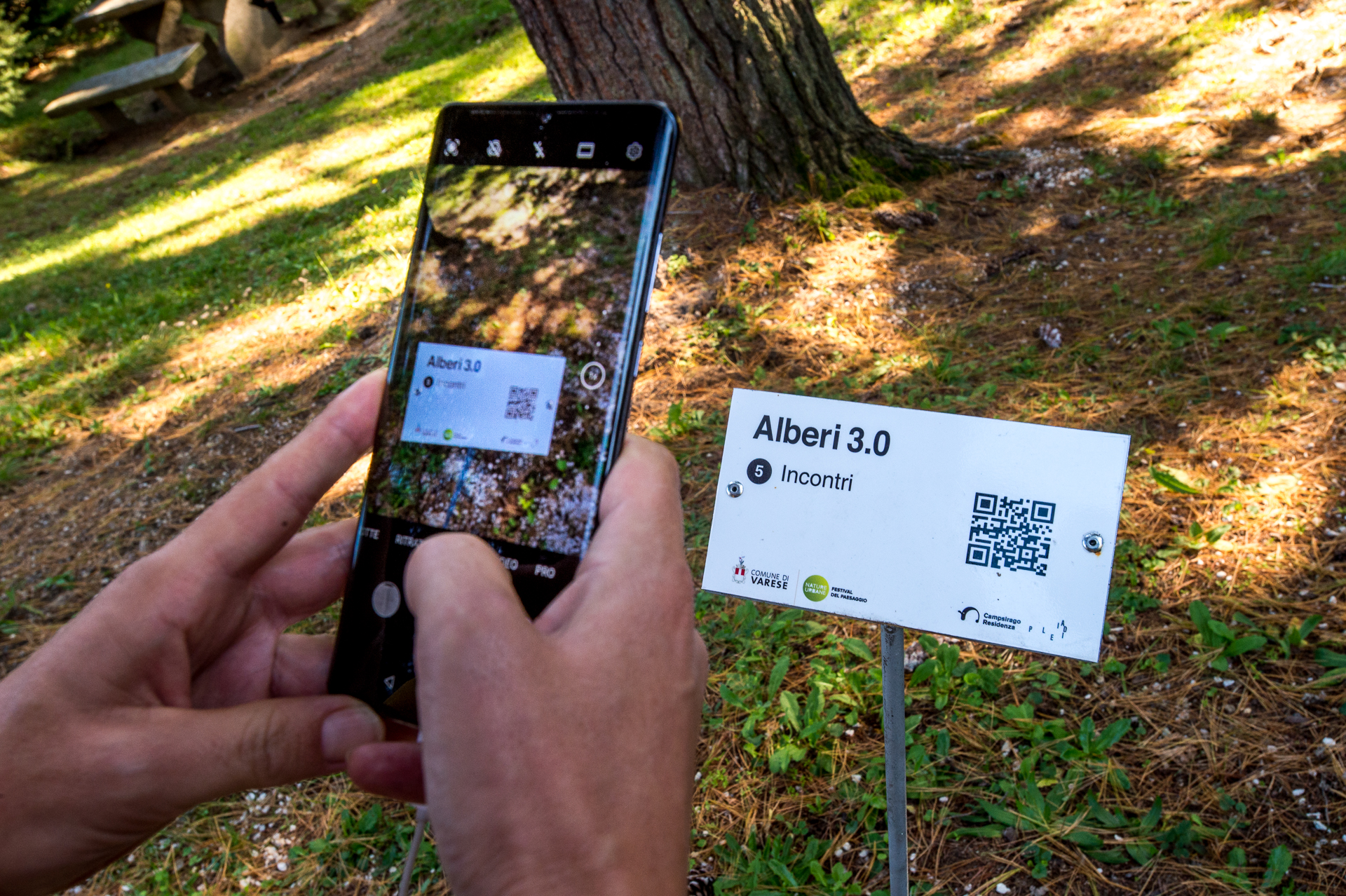
The artistic installation can be enjoyed free of charge through your smartphone equipped with internet connection, camera and any app to scan the QR Code. The visitor can live the experience in full autonomy, although alongside all those with whom he wants to share it.
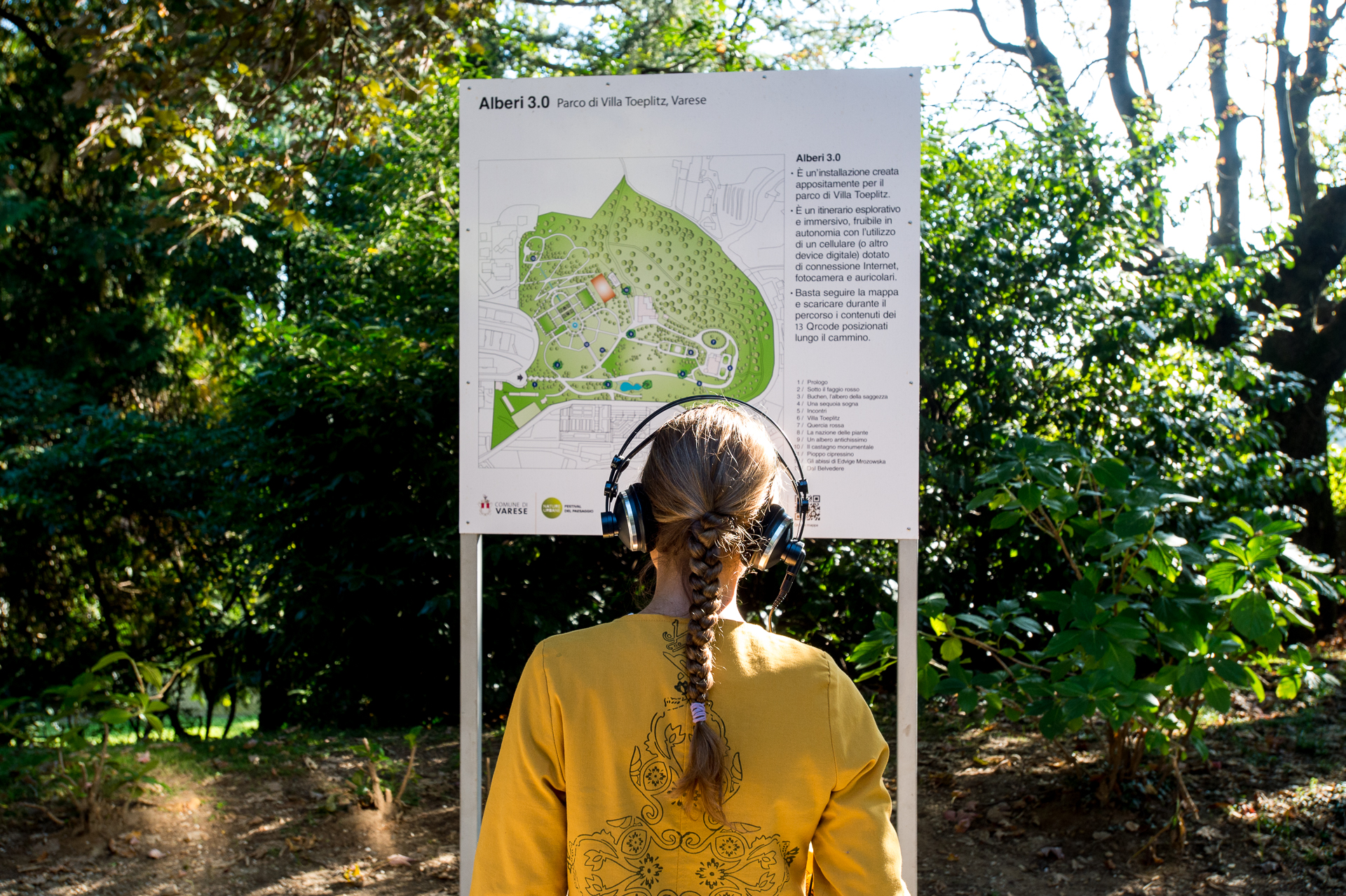
The route is indicated by a map placed at the entrance of the park and downloadable on your smartphone through a QR Code. Following the route indicated on the map, you will encounter 13 panels indicating the stages of the itinerary: simply download the contents of the 13 QR Codes placed along the route with your smartphone and let yourself be transported into a narrative and sound immersion that involves all the senses.
The use of headphones is recommended to live even more intensely the experience.
Alberi 3.0 is a digital site-specific format conceived in 2020 for Nature Urbane, the Landscape Festival of Varese. Since September 2021, thanks to the Municipality of Varese, it has become a permanent digital installation in the natural spaces of the park of Villa Toeplitz, usable free of charge at any time by all visitors to the park.
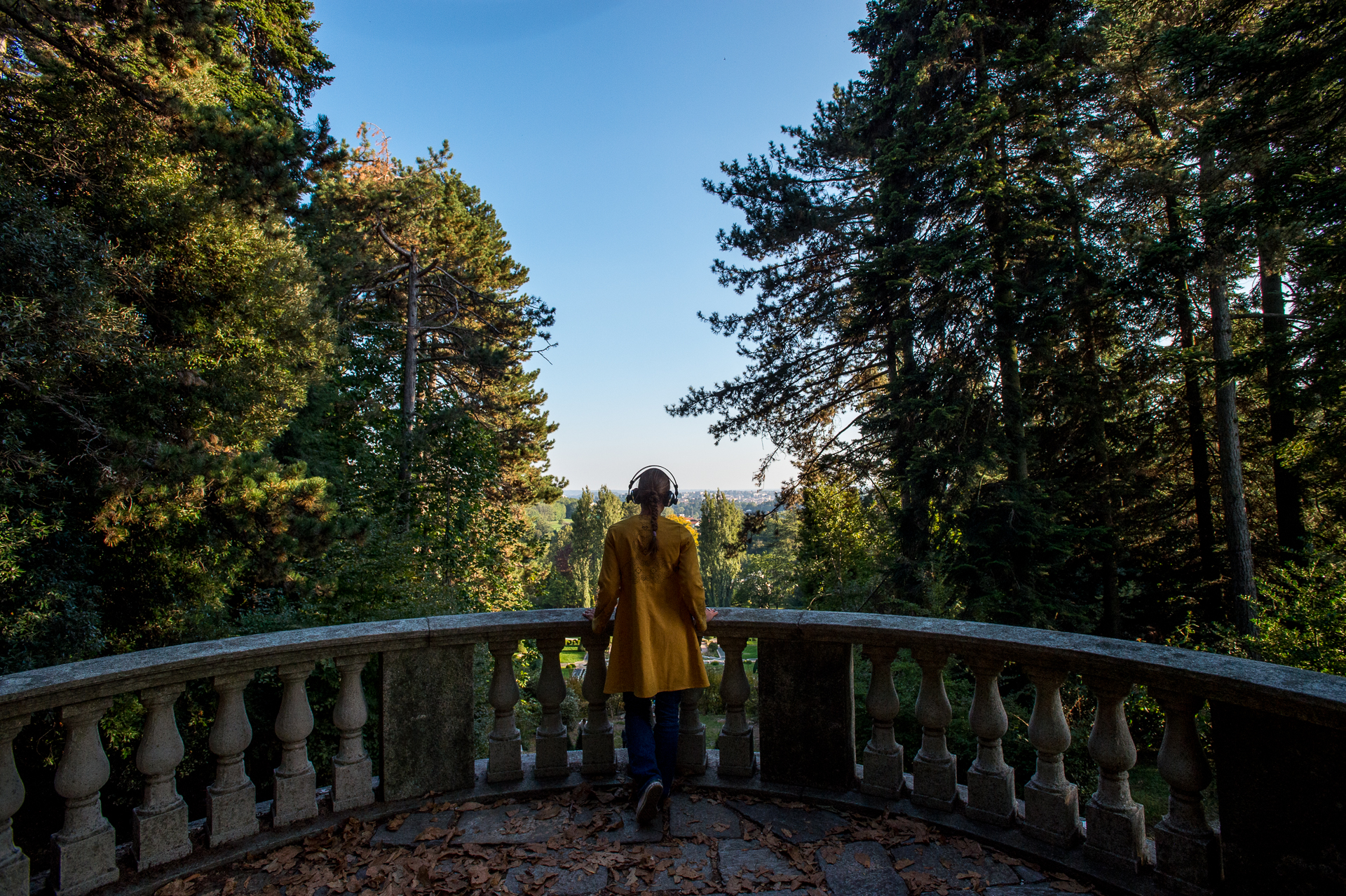
Trees 3.0 in the park of Villa Toeplitz is a site-specific production of Campsirago Residenza realized for the Municipality of Varese.
Composition in the space Michele Losi | dramaturgy Sofia Bolognini, Michele Losi | sounds Luca Maria Baldini, Diego Dioguardi | English translation Fred Charap | production Pleiadi, Campsirago Residenza
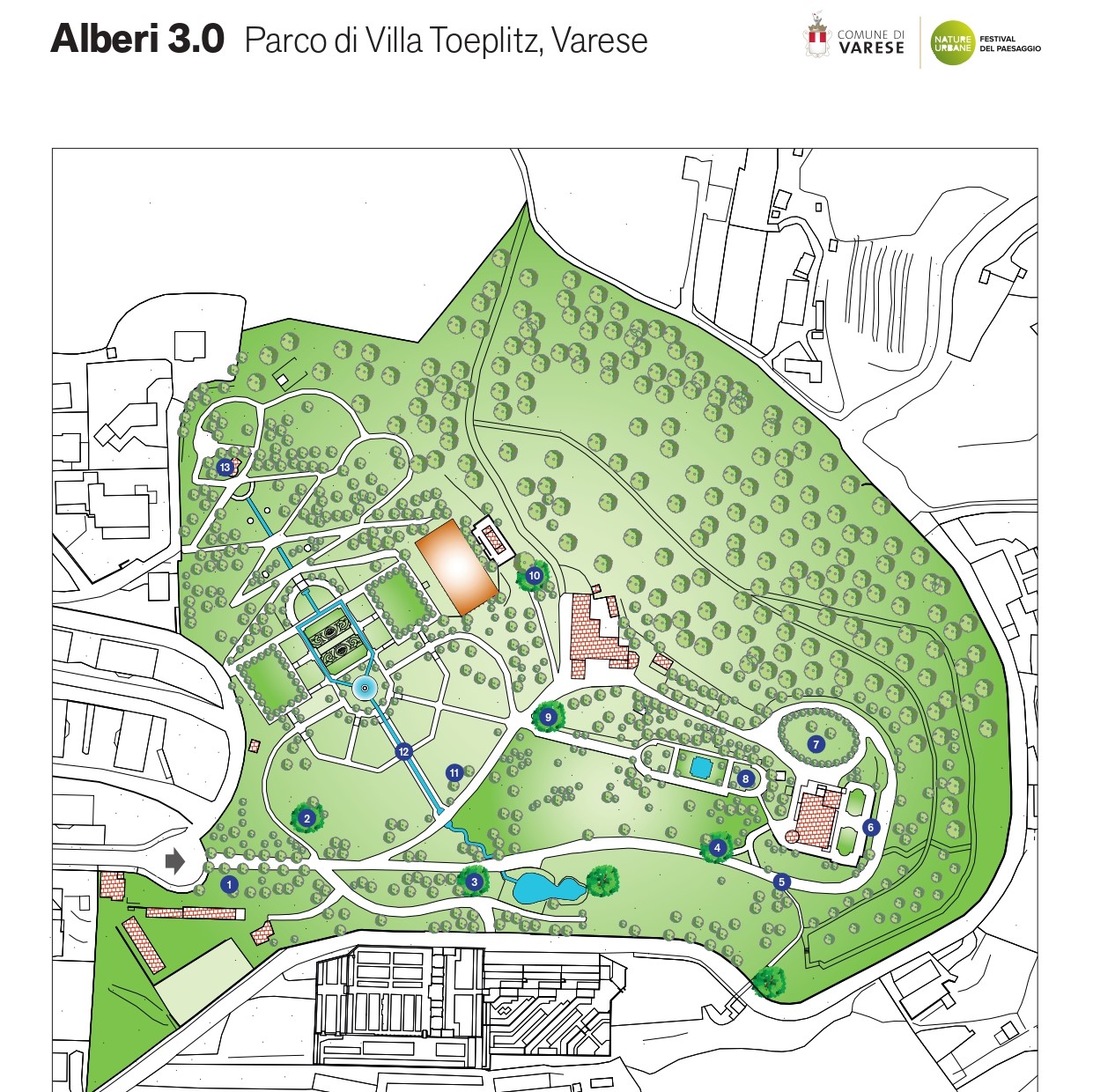
Il parco di Villa Toeplitz
Villa Toeplitz it was built in 1901 and subsequently named after the banker Jósef Leopold Toeplitz, who bought the villa in 1914. It previously belonged to the Hannesens, a German family that used it as a country holiday house.
Villa Toeplitz is considered one of the ten most beautiful parks in Italy thanks to its carefully designed gardens, scenic fountains and water features.
Villa Toeplitz’s Gardens consist of 8 hectares. They are connected by a “complex” pathways running through a connected system of exotic plans, fountains and buildings. The Park was designed in 1927 by the Parisian studio L. Collin – A. Adam & C.
Two different gardening styles compose the main Villa Toeplitz’s Gardens: a “specifically formal” Giardino all’italiana, characterized by low boxwood bushes and cypress trees; and an English landscape garden, with beech trees, oaks and cedar trees. A part of the park is currently occupied by a large chestnut wood, penetrated by tracks leading to a “deep nature contacting experience”. The park also contains a series of fountains, waterfalls and symmetrical topiary architectures, that characterize the early origins of the garden. A natural pathway runs through a chestnut wood in the northern part of the gardens immediately behind the villa, from the southern entrance of the gardens to the northern one. It is composed of “sinuous and romantic” alleys that are interrupted by small hills and “elegant” iron gazebos.
The structure of the Gardens defines a division between two specific gardening styles: an “intricate” and “elegant” structure that characterize a typical Giardino all’Italiana contrasting with a more natural environment composing a more moderate English Garden.
Deeper in the gardens, right below the belvedere, several fountains take place. The high number of fountains, waterfalls, topiaries and “little canals inspired by the Kashmir Gardens oriental tradition” present in the Garden, they identify it as “eclectic” .
A Chestnut wood is located in the north-east part of the Gardens, just behind the villa. It was planted when the Toepliz family moved to the Villa and its heavy growth is due to the favourable climate of the Varese province, where the chestnut is one of the most widespread plants. The Chestnut wood is part of a wide economic circle in the Varese zone, the so-called “Chestnut Economy”. Chestnut trees are an important resource since they are raw materials for different fields of the economy of the province. ” Chestnut wood is used to make furniture, barrels, roof beams, posts fencing or stakes, as firewood and in the production of charcoal ” and like so to aliment the local economy. The chestnut wood of Villa Toeplitz has also the function of “beekeeping”: because “bees are very attracted by male chestnut flowers and the subsequent honey production is large”
The chestnut wood, along with a series of artificial lakes and wide alleys, composes the second part of the garden, the English landscape garden.
On 21 December 1972, the Toeplitz Gardens, as well as the Villa, were acquired by the administration of the City of Varese.

